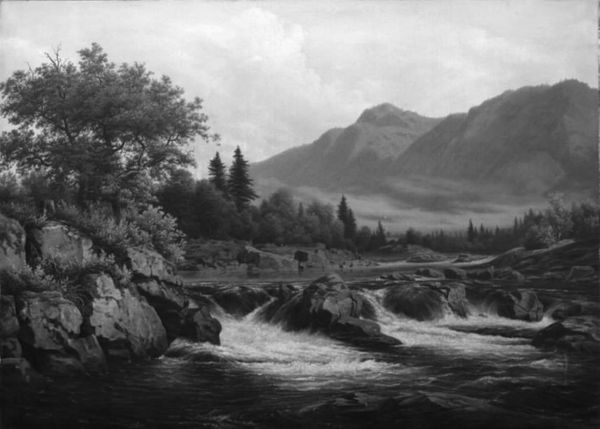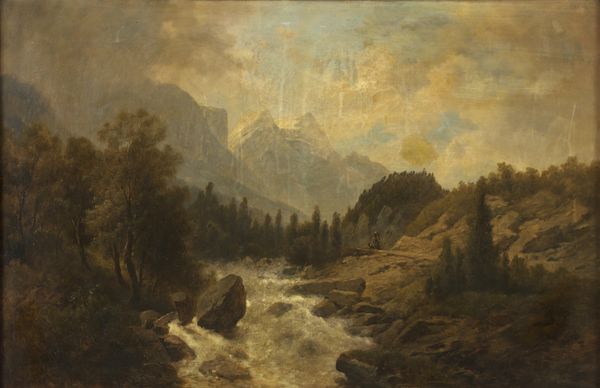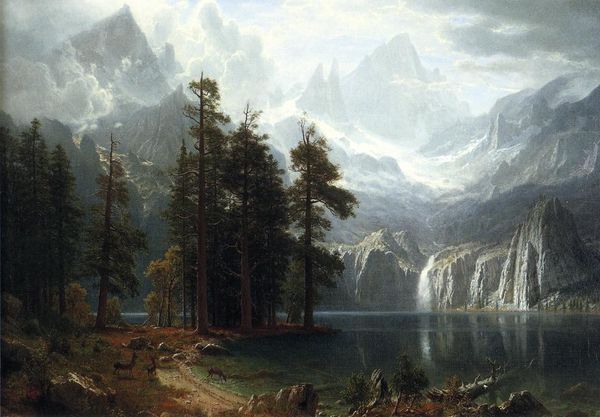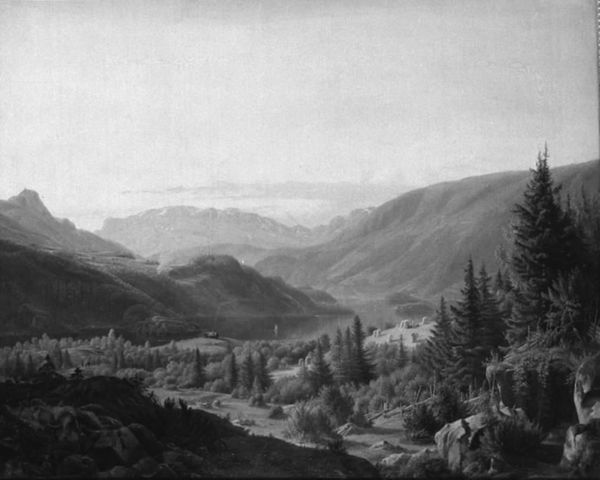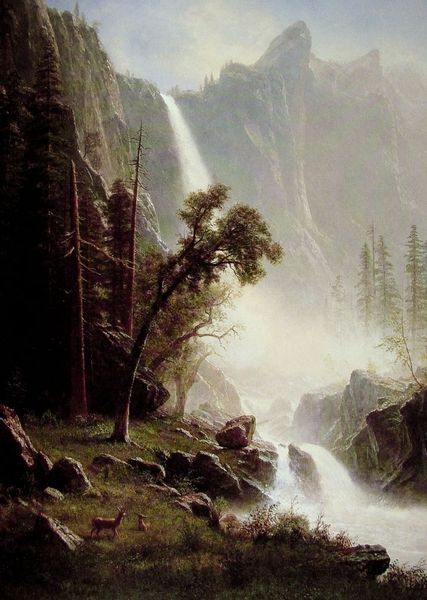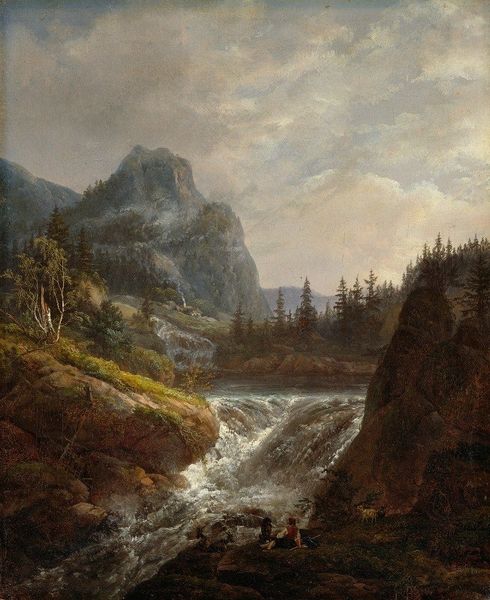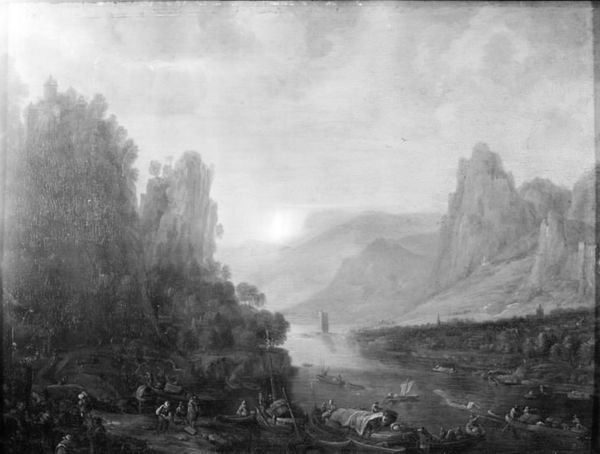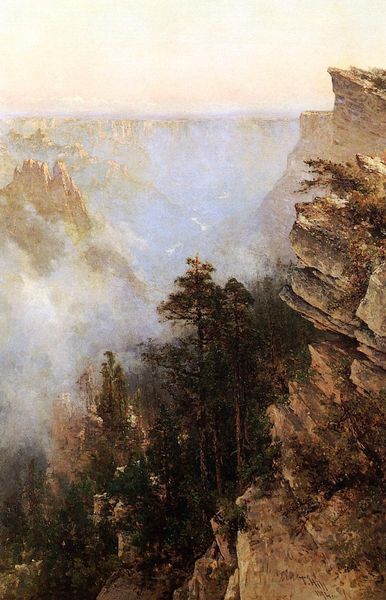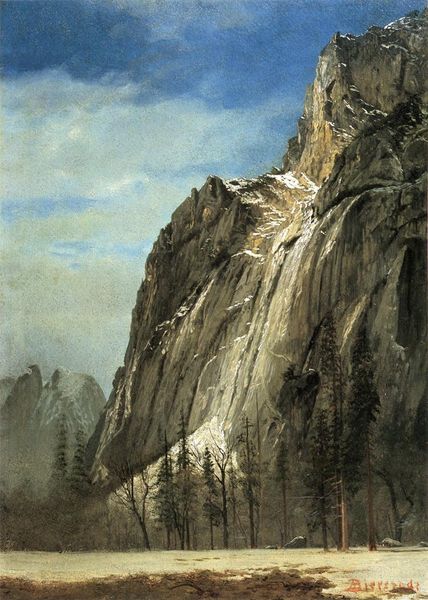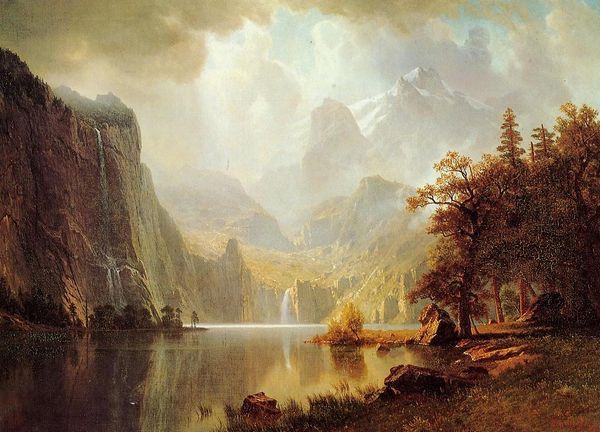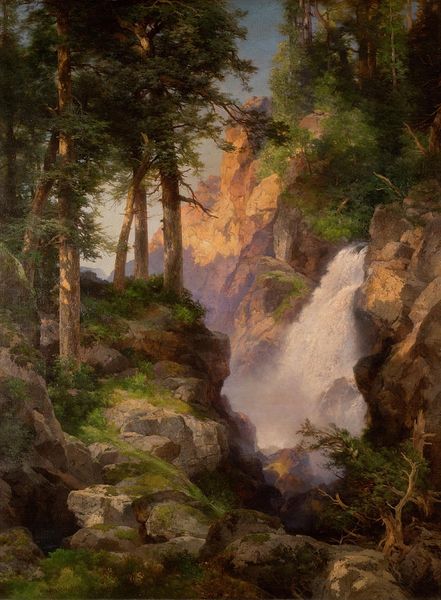
Dimensions: 26 3/4 x 38 3/4 in. (67.9 x 98.4 cm)
Copyright: Public Domain
Editor: "After the Storm" by Albert Bierstadt, painted sometime between 1867 and 1880. It's breathtaking—that mist hanging in the air feels almost palpable. It's in the collection of the Metropolitan Museum of Art. What's your interpretation? Curator: Well, given a materialist lens, the canvas itself speaks volumes. Consider the labor involved in preparing it, grinding pigments. Where did those materials come from? Who extracted them, and under what conditions? The landscape is majestic, yes, but think about the social implications. This wilderness, even "after the storm", probably wasn’t uninhabited before Bierstadt memorialized it. Editor: You’re saying that the way the landscape is represented… it kind of erases the human impact? Curator: Exactly. Think of the resources required to stage these grand artistic expeditions. It’s all linked. Was the paint commercially produced, and what did the production imply about nineteenth century industrialization? These are questions that shift the focus from solely aesthetics towards understanding the power structures influencing the production and consumption of this art. Do you see how that changes our perception? Editor: That does open up a new avenue to investigate, to view landscape paintings not just as beautiful scenery, but also evidence related to material conditions, consumption and labor in that specific historical context. Curator: Indeed. It reframes "nature" as a manufactured ideal, achieved through concrete materials and human activity. Editor: I never considered a painting this way, focusing less on symbolism and more on the literal 'stuff' that constitutes its very being, that there is such power in simply asking “what is it made of and how?” Curator: Precisely, it shifts your critical positionality as the viewer in a really enlightening way.
Comments
No comments
Be the first to comment and join the conversation on the ultimate creative platform.
